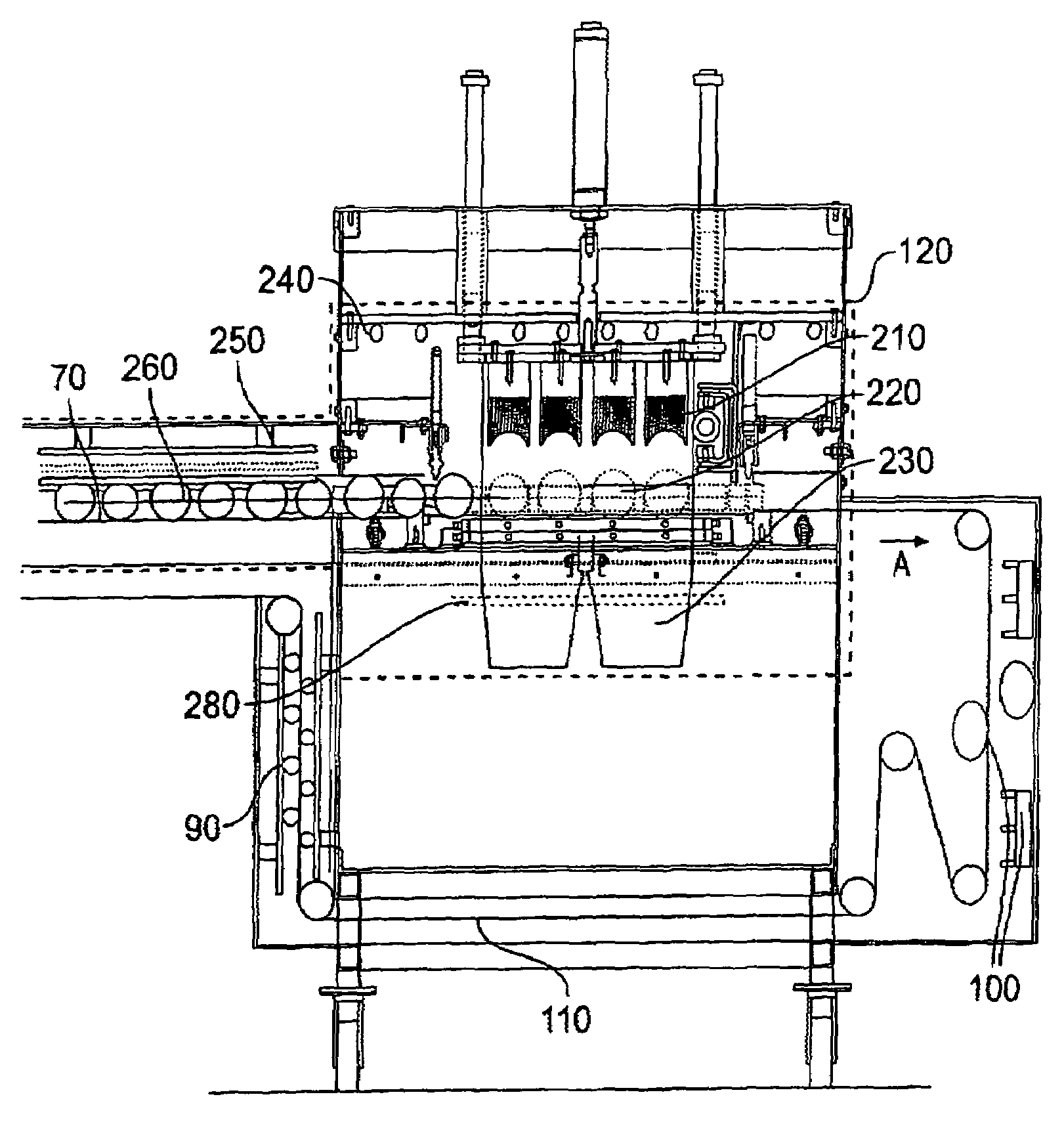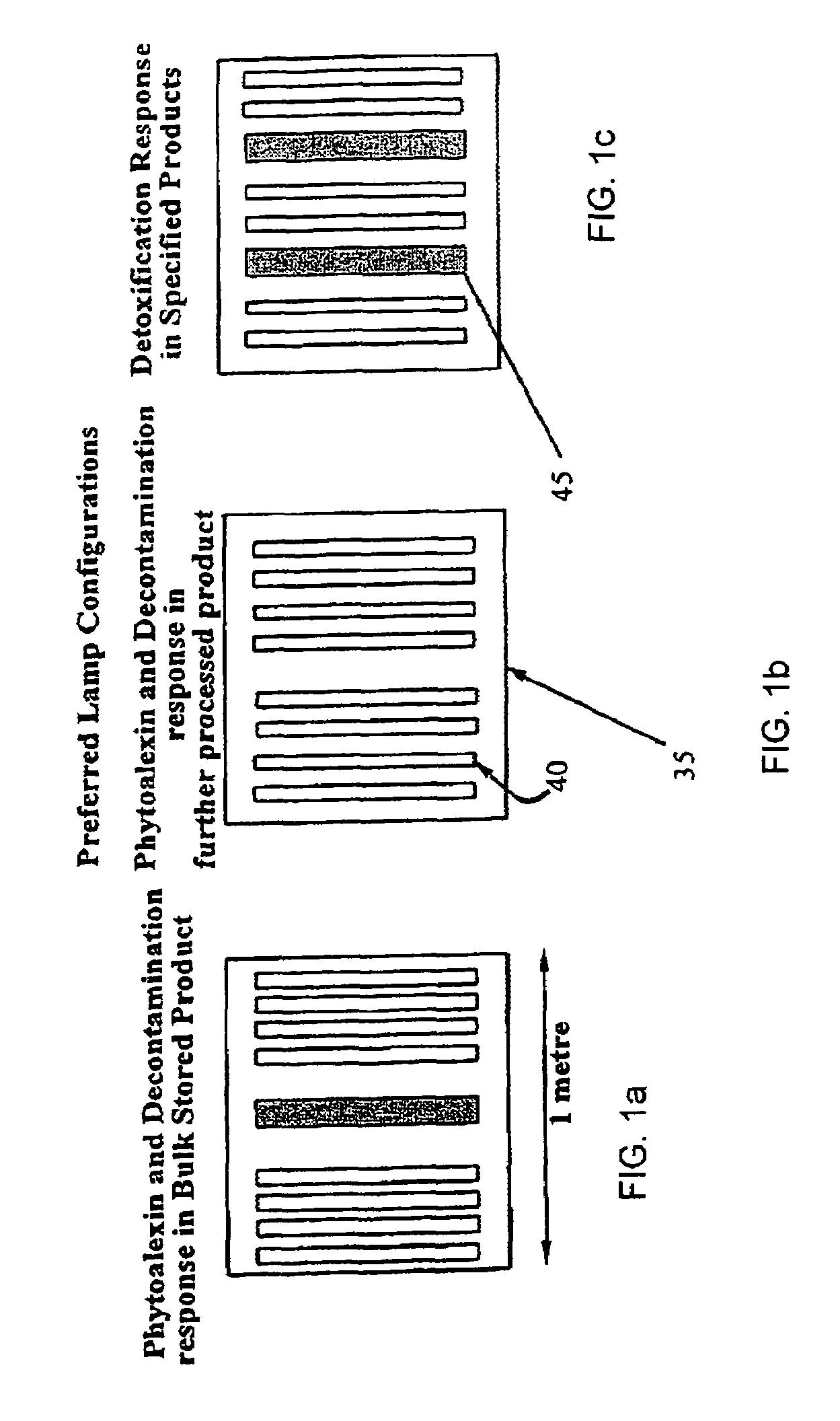Treatment of vegetable foodstuffs
a technology for vegetable foodstuffs and food scraps, which is applied in the field of vegetable food scraps treatment, can solve the problems of affecting the health of both humans and animals, affecting the health of animals, and affecting the health of animals, and achieves the effects of preventing or reducing the development of eliminating or reducing microbial contamination and/or aflatoxin
- Summary
- Abstract
- Description
- Claims
- Application Information
AI Technical Summary
Benefits of technology
Problems solved by technology
Method used
Image
Examples
example 1
Method and Apparatus for Decontaminating Product and Inducing the Preventative Phytoalexin Response in Tomatoes, Potatoes, Peppers or Similar Bulk Product
[0104]The apparatus for achieving this is a combination of all 6 modules previously described and is shown in FIG. 2 utilising one of the lamp configurations shown in FIG. 1, typically as shown in 1a or 1b.
[0105]Tomatoes, freshly harvested or previously bulk stored, are introduced into the entrance to the system via a rolling conveyor. The distance between the individual rollers on a single roller shaft and between adjacent rollers is adjustable but sufficient to allow a tight packing of the tomatoes without any sides of adjacent tomatoes touching. Ideally there should be a gap (60) of between 6 mm (for Cherry or Bryan tomatoes) and 20 mm (for potatoes, large tomatoes and full size peppers) all round. For optimal performance, these dimensions may need adjustment depending on the size and size variation of the fruit.
[0106]The forwa...
example 2
Aflatoxin Removal in Maize and Sweetcorn
[0114]In comparison with example 1, aflatoxin removal requires a much simpler but very specific configuration (FIG. 1c). In this instance lamps emitting essentially UV-C wavelengths alone are generally ineffective particularly when mixed aflaxtoxin contamination is encountered and only lamps capable of emitting all 3 UV wavelengths (as previously described and typified by BL-MSC0041) produce the desired detoxification and the required effectiveness. However lamps emitting primarily UV-C alone are included in the configuration to enhance the microbial decontamination treatment which is allowed to occur in parallel with the detoxification treatment.
[0115]The major difference compared with phytoalexin induction is the very substantial increase in the energy level required to achieve effective aflatoxin detoxification as the toxin is frequently widely distributed within the total volume of the product.
[0116]The lamps are positioned at a typical di...
example 3
Decontaminating Tomatoes and its Associated Processing and Packaging Equipment to Effect Slicing and Packaging within an Aseptic Environment while Inducing a Synergistic Protective Phytoalexin Response
[0125]Example 1 has detailed how a variety of foodstuffs can be protected from contamination during storage through a combined protective (induction of a Phytoalexin response) and curative (microbial decontamination) method. Eventually such stored product is introduced into a manufacturing environment for processing into food and food products for consumption. The manufacturing process introduces considerable potential for contamination and cross contamination of these prepared foodstuffs due to non-sterile processing equipment, common contact surfaces, packaging materials and the atmosphere within which it operates.
[0126]The same protective reaction and a more thorough curative method can be applied and induced during such manufacturing operations but using conditions less likely to c...
PUM
 Login to View More
Login to View More Abstract
Description
Claims
Application Information
 Login to View More
Login to View More - R&D
- Intellectual Property
- Life Sciences
- Materials
- Tech Scout
- Unparalleled Data Quality
- Higher Quality Content
- 60% Fewer Hallucinations
Browse by: Latest US Patents, China's latest patents, Technical Efficacy Thesaurus, Application Domain, Technology Topic, Popular Technical Reports.
© 2025 PatSnap. All rights reserved.Legal|Privacy policy|Modern Slavery Act Transparency Statement|Sitemap|About US| Contact US: help@patsnap.com



